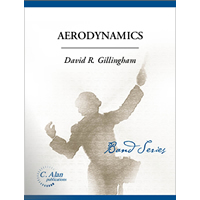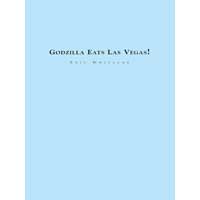♪詳細情報♪
演奏時間:16分30秒(約)
グレード: Soloists 6 , Wind Ensemble 5
主なソロパート:Rock Band /Fl. /Tuba /Eng.hrn. /Bsn. /Ob.
編成:ロックバンドと吹奏楽
▼楽器編成▼
Flute 2 (Changes to Tenor Flute in C - Optional)
Flute 3 (Changes to Piccolo)
Oboe 1, 2
English Horn
Bassoon 1, 2
Clarinet in Bb 1, 2, 3
Bass Clarinet
Contrabass Clarinet in Bb
Alto Sax.1, 2
Tenor Sax.
Baritone Sax.
Trumpet in Bb 1, 2, 3
Trombone 1, 2, 3
Euphonium
Tuba
Electric Guitar
Electric Bass
Keyboards
Drums
Percussion 1
Vibraphone
Tambourine
Pair of Cymbals
Marimba (*)
Marimba (*)
Bass Drum
Marimba (*)
♪楽曲解説♪
B-Side Concerto, an unclassifiable piece, is born from the necessity shown other times by the composer, of combining elements from different musical traditions. In this case, a rock band (electric guitar, electric bass, keyboard and drums) is the main element which converses or confronts the symphonic ensemble. The intention of the composer is not making Symphonic Rock but the opposite: integrating the tools from other musical styles for getting his own language, an unequivocal personal expression. The piece, divided into three parts without internal pauses, features two main superimposable motifs (a and b), which appear transformed during the whole work:
These two motifs are especially used on the second and third Modes of limited transposition. This modal use, combined with the timbre of the rock band, gives the group a mysteriously seductive sonority.
The first part of the piece is divided into two sections. First of them, in medium tempo, introduces and repeats the two motifs in several ostinati which drive the music to a first climax prior to the first apparition of the electric guitar, which is the undisputed leader during the whole piece. The second section, which is frenzied and very virtuous, is characterized of the distorted sounds of the solo guitar:
The second part begins with an introduction in which appears a new variant of the b motif. This variant is exposed twice, in imitative form: first of them played by the tuba and the second time by the electric bass and the Hammond organ, which is one of the most characteristic sounds of this part. After this introduction, the only one theme of the piece, with an obvious blues essence, is introduced by the guitar:
After a brief and tranquil transition, the theme is recapitulated brilliantly by the saxophone section. In the end of this theme, a chromatic cell (c) which appeared sometimes accompanying the theme, becomes suddenly into the main element that, under an accelerando, drives the music to an important development section.
In this new section, the c cell is used as the head of a soggetto with which the composer makes a fugato with five entries. In the end of the brilliant fifth entry, the same c cell is transformed to an obstinate groove upon which the soloists make a large improvisation. The second part of the piece ends with a free last exposition of the theme played by the tenor flute. This melody is splashed by some interventions of the solo guitar with delay effect which announce, using the first three notes of the b motif, the imminent arrival of the third part.
The third part is basically a recapitulation of the first one, but with important differences. In the first section, in medium tempo, the melody of the solo guitar leads the group, while the second one is now a big transition for connecting the final Coda. This last section, written in a style close to the Hard Rock, is built with a variant of the beginning of the second part which is repeated some times around E, which is main tonic of the whole piece. With a frenzied succession of 16th notes in parallel motion of octaves which drives until a blunt E the work ends definitively:




















